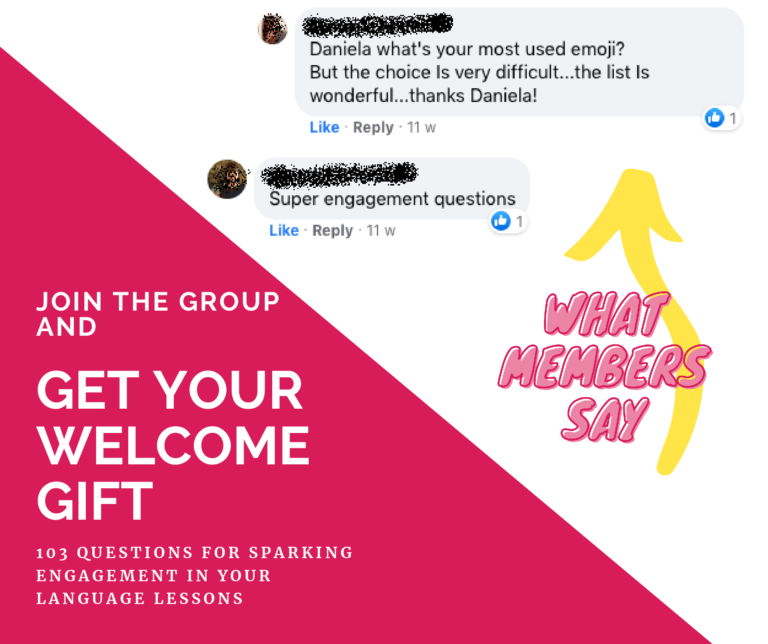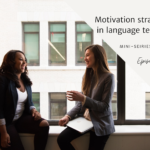
Language teachers’ main job consists in working out how to overcome language barriers and in implementing winning strategies accordingly. That’s the goal. What exactly are language barriers, though? What happens when students seem to reject what we teach them? And, most importantly, is there anything language teachers can do about language barriers? This post explores all those questions.
Do language barriers ever exist?
Language barriers exist. I want to delete any doubts teachers and students might have about this: language barriers, more precisely learning barriers, do exist. Even the best of the language students has learning barriers. There is nothing we can do about that. Nevertheless, what we, language teachers, actually can do is to learn to cope with learning barriers. Knowing what exactly they are and how they work can help us to work out how to overcome language barriers.
What are language barriers?
I’m going to answer this question by tapping into two of the most important contributors in the field of language acquisition: Stephen Krashen and Georgi Lozanov (father of Suggestopedia). On one hand, I’m going to refer to Krashen because he is probably the most widely known author in the field. On the other hand, I’m going to refer to Lozanov’s work because it throws a new, original shade on the topic. I believe the two approaches to learning barriers are complementary.
Language barriers as affective variables
Krashen describes the language barriers as affective variables. By variables he means filters. The affective variables are: motivation, self-confidence, anxiety and personality traits.
- Motivation refers to the reason why students learn a foreign language: is it because they need to pass an exam, for instance, or is it because they want to work abroad?
- Self-confidence and anxiety refer to how comfortable students feel every time they get in touch with the target language: what type of emotions and feelings does learning the target language trigger in the students?
- Personality traits are personal inclinations and behaviours that might facilitate or slow down the acquisition process: for example, outgoing students like interaction, whereas introvert students like observing rather than coming forward and speaking up.
Krashen sets the foundations for getting to how to overcome language barriers.
The 3 learning barriers by Lozanov
The suggestopedic framework offers an interesting point of view on the matter “how to overcome language barriers in the classroom”. According to Lozanov, there are three learning barriers:
- Emotional barrier
- Logical barrier
- Ethical barrier.
The emotional barrier triggers every time students experience uncomfortable emotions or feelings in the learning process. Stress, boredom, fear, sense of being under pressure, for instance, usually trigger the emotional barrier.
The logical barrier triggers when students think “This is not possible to do.” or “I can’t do this.” One example among many is the reaction the students in my suggestopedic courses usually have the first time I say they are going to memorise about 2,000 lexical units in 72 hours without homework or revising. They think “That’s not possible!” because the goal I’m communicating goes beyond what they are used to, it is far from the usual goals they were used to setting in other language courses.
The ethical barrier triggers when students think “This goes against my ethical values, against my culture.” Thoughts, content or opinions we share in our lessons might hurt some students’ sensibility or believes. Think about it: how could vegan students experience a lesson about food for which you chose to discuss how to kill and cook chickens?!
Furthermore, some students might experience the ethical barrier when we choose methodologies (types of activities and exercises) that clashes with their believes and culture. Hand shaking could be not convenient for some women, for instance, as well as creative exercises and games might be difficult to be welcome by students belonging to cultures that don’t praise creativity.
Regardless of the model you want to keep into consideration for describing the language barriers, when they get into action they prevent new information (new input, new content) to go through our memory and to reach the long-term memory.
How do language barriers work?
During a language class students are exposed to the target language, to new content, new information, new vocabulary and new grammar structures as well. Let’s call all those as input. When new input gets to our students’ brain, the sensory memory filters it and the input goes through to the working memory. Afterwards, in some cases, the input is stored in the long-term memory. Now, what enables the input to reach the long-term memory?
Imagine there is a door between the working memory and the long-term memory. The door closes when students feel uncomfortable, we are disappointed, angry, anxious, worried, terrified, insecure, stressed (emotional barrier) as well as when the input clashes with the students’ logical barrier or ethical barrier. The door opens when the students feel happy, excited, joyful, pleased, comfortable, relaxed, at ease, as well as when the students think what they’ve been learning is doable (logical barrier) and it’s respectful of their cultures and believes (ethical barrier).
Well, that door represents the affective filter. It opens and closes depending on how good a teacher is in coping with her students’ affective filters. In other words, good teachers are able to “open” the affective filter. How do they do that?
How to overcome language barriers?
There are two main ingredients in this recipe: repetition and a variety of methods.
On one hand teachers remind the students the information they have to retain. The use of visual aids, for instance, gives a huge support in this. Not only teachers should repeat and invite the students to get back to the new input pretty often during each lesson, but also teachers should support their students in the revision. Using visuals is a valuable and easy-to-implement strategy that aims at this. It is often underestimated by many teachers who don’t grab the big strategic picture in the use of visual aids. If you are keen on finding out more about this, here is a guide on how to make the most out of visual aids in your language classes:
On the other hand, using a variety of methods allows the teachers to adapt to the students’ learning styles. Also, it is an opportunity to present the same topic or content through different activities and exercises. Individual, analytical exercises will match with the learning preferences of those students who like to observe and understand logics, dynamics, structures. Activities involving the group as a team in experiential training exercises will suit those students who like drawing conclusions starting from and through the experience.
Conclusions
I wanted to give a general overview on what prevents our students from absorbing and from getting engaged with our language lessons, as well as on how to overcome language barriers in the classroom.
Hope you enjoyed this post and that it will give a fresh twist to your teaching style.
Want more support?
Join the Facebook group Independent Language Teachers Collective to get daily advice, tons of free training and to branch out with other independent language teachers like you!
ALSO…
Available only for the Collective members: free list 103 question for sparking engagement in your language lessons.
This is what members say about the freebie:

Join in the Collective and grab your welcome gift:
Join Facebook Group


